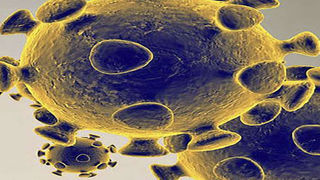
An illustration image of the Covid-19 coronavirus.
| Photo | AFPNews
Premium
Third wave: ‘Red zone’ safe but fresh cases rise across the country
What you need to know:
- The rest of the country is beginning to experience offshoots of high caseloads with numbers rising in several counties.
- Nairobi and Mombasa counties continue to have the highest attack rates at 1551.7 and 866.3 per 100,000 population, respectively.
The third wave of Covid-19 is ripping through the nation despite positive news from the five ‘disease-infected’ counties.
Latest data shows that the burden of the disease is gradually shifting away from the ‘red zone’, which last month accounted for more than 70 per cent of the country’s caseload.
President Kenyatta ordered the cessation of all movement into and out of Nairobi, Kajiado, Machakos, Kiambu and Nakuru to curb the spread of the virus. Although these counties had a steep curve of new caseload, things seem to be easing as it has dropped to about 48 per cent.
However, the rest of the country is beginning to experience offshoots of high caseloads with numbers rising in Uasin Gishu, Kericho, Kisumu, Mombasa, Meru, and Kitui counties. As such, the country may linger in the woods of the third wave a little longer.
“The non-disease infected counties are now crucial in determining the third wave,” tweeted Dr Ahmed Kalebi, a pathologist.
The country has so far recorded 147,147 cases and 2,394. Additionally, about 526,026 people have received at least one dose of the Covid-19 vaccine.
The World Health Organisation (WHO) recommends that one of the indicators that the pandemic is under control is when less than five per cent of samples tested are positive for Covid-19 for the past two weeks. But the country is yet to achieve this seeing that the positivity rate of Tuesday stood at 15.4 per cent.
Highest attack rates
Nairobi and Mombasa counties continue to have the highest attack rates at 1551.7 and 866.3 per 100,000 population, respectively, compared to 307.3/100,000 for the whole country and need enhanced interventions.
Much emphasis was initially placed on the elderly, or those with pre-existing conditions such as obesity, hypertension, and diabetes as being at high risk of contracting and/or dying of Covid-19.
Males account for 61 per cent (89,140) of all infections and 69 per cent (1,645) of the deaths in Kenya. While 28 per cent of the cases have been recorded in young males between 30 and 39 years, the highest number of deaths have been among those aged 50 and above.
Scientists seem to have left out the potential fact that being male could also be a factor. The potential reasons why more men are dying from Covid-19 than women, run the gamut from biology to bad habits. Experts say part of the reason is women tend to have stronger immune systems than men.
Men also tend to engage in more risky behaviour, such as ignoring physical distancing, and they don’t take symptoms as seriously.
A study published in June last year in the National Center for Biotechnology Information (Ncbi) notes that biological differences in the immune systems between men and women may impact our ability to fight infection including Sars-CoV-2.
Generally, the study says females are more resistant to infections than men, and this is possibly mediated by several factors including sex hormones and high expression of Covid-19 receptors (ACE 2) in men.
Public health measures
“But also lifestyle, such as higher levels of smoking and drinking among men as compared to women. Additionally, women have a more responsible attitude toward the Covid-19 pandemic than men,” concluded microbiologist and biomedical researcher George Bwire, the author.
The WHO on Monday warned that the world needs a “reality check” on the state of the pandemic, as countries abandoned restrictions despite four weeks of rising deaths and seven weeks of rising cases.
WHO’s technical lead for coronavirus response, Maria van Kerkhove, said 4.4 million infections had been recorded across the world last week.
“This is not the situation we want to be in 16 months into a pandemic, where we have proven control measures. It is time right now where everyone has to have a reality check about what we need to be doing,” Dr Van Kerkhove told a news briefing Monday.
Several countries in Asia and the Middle East have seen large increases in cases, WHO Director-General Dr Tedros Adhanom Ghebreyesus said, noting that “confusion, complacency, and inconsistency in public health measures” were primary drivers.
The spikes are occurring despite more than 780 million vaccine doses being administered globally, Dr Tedros said, adding that while jabs were a vital and powerful tool, they were not the only ones available.
“It takes a consistent, coordinated, and comprehensive approach,” he said while emphasising that public health measures (mask-wearing, physical distancing, ventilation, and hand hygiene) work to stop infections and save lives.





